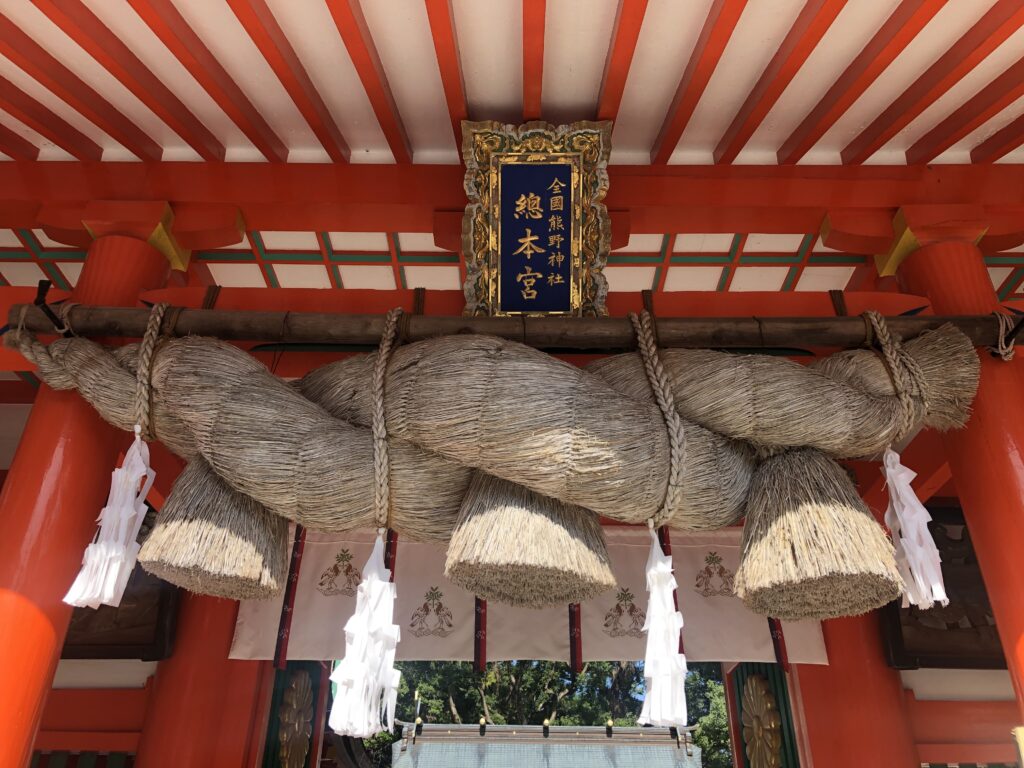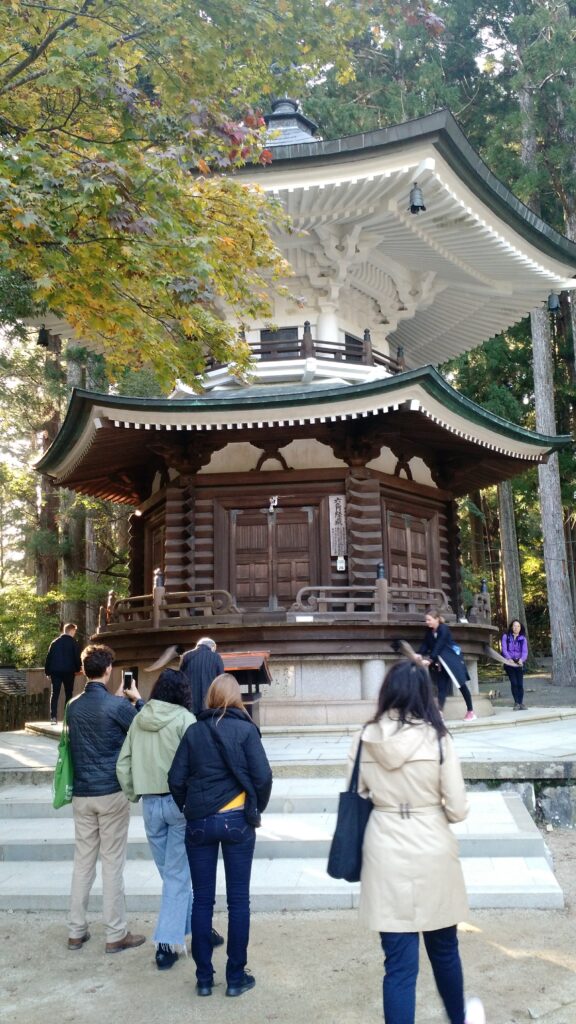
Pilgrim Stamps, collected by Zumrad Ilyasova
Open the small door, take out the seal, press it into red ink, and stamp your page. At the Hosshimon Ōji—the entrance to the “pure land” on a Kumano Kodō pilgrimage—the pilgrim’s seal impressed upon us the importance of inscription, vision, and reading. The terms and their related practices wove through our wanderings and our pauses. In a group in which only two people can actually decipher kanji, “lost in translation” pushed us all to remember that the most is gained when terms and concepts break down between interlocutors.

Claps (of prayer), clangs (of rattle-bells), clicks (of Heian-style wooden shoes) bring the shrine of Shingū to life. Shinto is a noisy affair. Add to this the fluttering pages of text or the quick turn of a scroll—paper pouring, or rubbing against paper. Tendoku speeds you through sutras: waterfalling an accordion-folded text from the right hand to the left, rolling a scroll at lightening speed makes a text visible. The text moves across the horizon of the visible, and thus it is “read.” But visible to whom and how does “mere” seeing reframe normative definitions of reading?

Such textual activation called up our day on Mount Kōya when at the main temple precinct we spun the sutras. Circumambulating a small repository of texts, we each pushed a handle that sent the scrolls inside spinning. That canon of Buddhist texts was only visible in the mind’s eye, but we felt its literal heft—substrates, ink, and the wooden structure that needed to be moved to send the text into motion.

Some text, however, should be hidden for another day. A small bronze vessel in the humble site museum at the Nachi waterfall shrine was meant to hold sutras safe, out of view, buried in the ground to await an era of the buddha, one that would come in 5.6 billion years. Having crossed back over the horizon of the visible—that is, having been excavated and frozen in a vitrine—it has lost its textual potential precisely because we can now read both the sutra it housed and the text inscribed upon its own surface. Art historical gain comes with a price. “It’s not the first time the discipline has gone trouncing about demanding that things be seen,” our leader noted.

Yet these questions of literal in/visibility crossed into the realm of the theoretical, philosophical, and linguistic. Do kanji have a visible referentiality? To an object on earth, or an idea? Not a phonetic sound—this much was clear as Micki McCoy and Kris Kersey brought characters to voice in dueling Chinese and Japanese intonations. To gesture, certainly: the index of the hand, the body, the brush and its ink. But what of bird writing, the primordial inscription by which characters were offered up in the bodies and wings of birds. We bought talismans of such writing in Nachi; a transparency with kanji was laid atop by the shop attendant. Birds became words, Micki and Kris produced them as sounds. But the transparency was pulled away and birds were left to flutter on the page, the only lines left being those that the eye and imagination could conjure–they could reimpose a horizon of legibility atop the picture. But writing, after all, is always already visible to begin with.